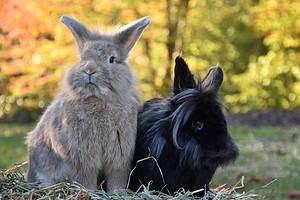Do you want to free-roam your rabbits but aren’t sure how? Or maybe you’re looking to improve your free-roam space.
The most important things to do before free-roaming your rabbits are to spay or neuter them, litter train them, and rabbit-proof your home. Put away dangerous objects, block off things they might chew, and block access to unsafe rooms.
Keep reading for more tips and tricks for free-roaming your rabbits, including how to bunny-proof your home, litter-train your bunnies, and more.
#1: Bunny-Proof Your Space
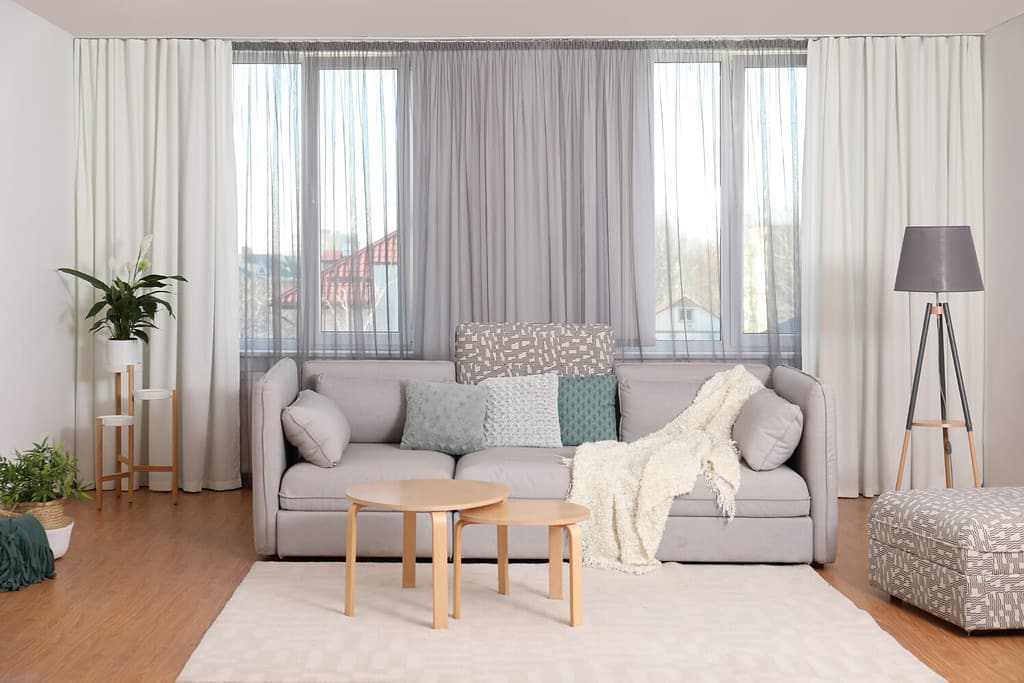
Keeping your floors clear is one way to rabbit-proof your home.
©New Africa/Shutterstock.com
First, you’ll need to bunny-proof your space so that your rabbits are safe and don’t destroy your things!
Choose a room or multiple rooms where you can pick up all dangerous items, and there aren’t any hazards such as other pets, children running around who could trample the buns, or hot food that could spill on them if you trip (most people block off the kitchen for this reason!).
Use cord covers to block access to any wires and pick up anything you don’t want them getting into. Not all rabbits chew baseboards, but you may need to cover them as well as any wooden furniture legs–C&C grids are useful for things like this.
You’ll also want to make sure they can’t crawl underneath furniture, where they can be difficult to reach. Some rabbits will potty in these spaces if allowed, which can be challenging to clean as well!
To keep them from forbidden rooms, you can either keep the door closed or set up a pet gate.
#2: Litter Train Your Rabbits

Litter training your rabbits keeps their space cleaner.
©mkzdillon/Shutterstock.com
You can litter-train spayed and neutered rabbits to reduce the mess they leave around the house. You often can’t expect perfection, but most buns are able to learn to use the box most of the time.
Litter boxes filled with hay should go in corners of the room since rabbits naturally go potty as they’re eating. Don’t use cat litter for your rabbit, but instead, choose a rabbit-safe litter such as paper bedding or aspen shavings.
#3: Set Up a Home Base
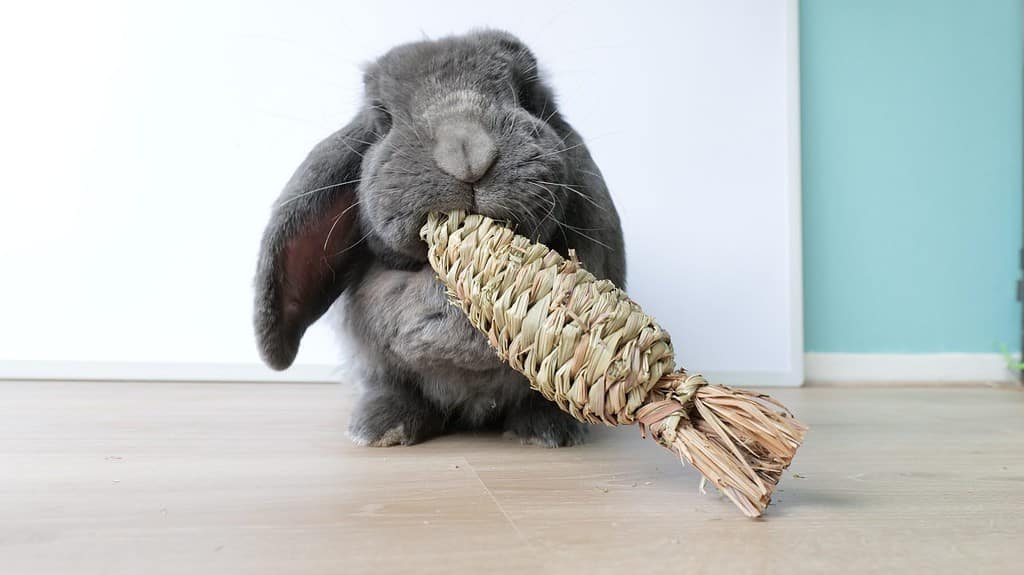
Your rabbits’ home base should include their toys and other necessities.
©Mariska van Dasselaar/Shutterstock.com
You’ll often want to start with your rabbits in their “home base,” which typically is a dog exercise pen with all of their necessities. This includes their litter box, hides and toys, and food and water bowls.
As your rabbits acclimate to their new home and use the litter box reliably, you can open up their space and allow them to free roam more and more. At first, you must watch them carefully to ensure they don’t get into anything you missed while bunny-proofing and that they don’t have accidents outside of the litter box.
Keeping the home base around but open can help your rabbits feel that they have someplace safe to go, keeps their things in one spot, and also allows you to put them away if you have guests, they regress in litter training, or it’s temporarily unsafe for them to free roam.
#4: Provide Plenty of Enrichment Items
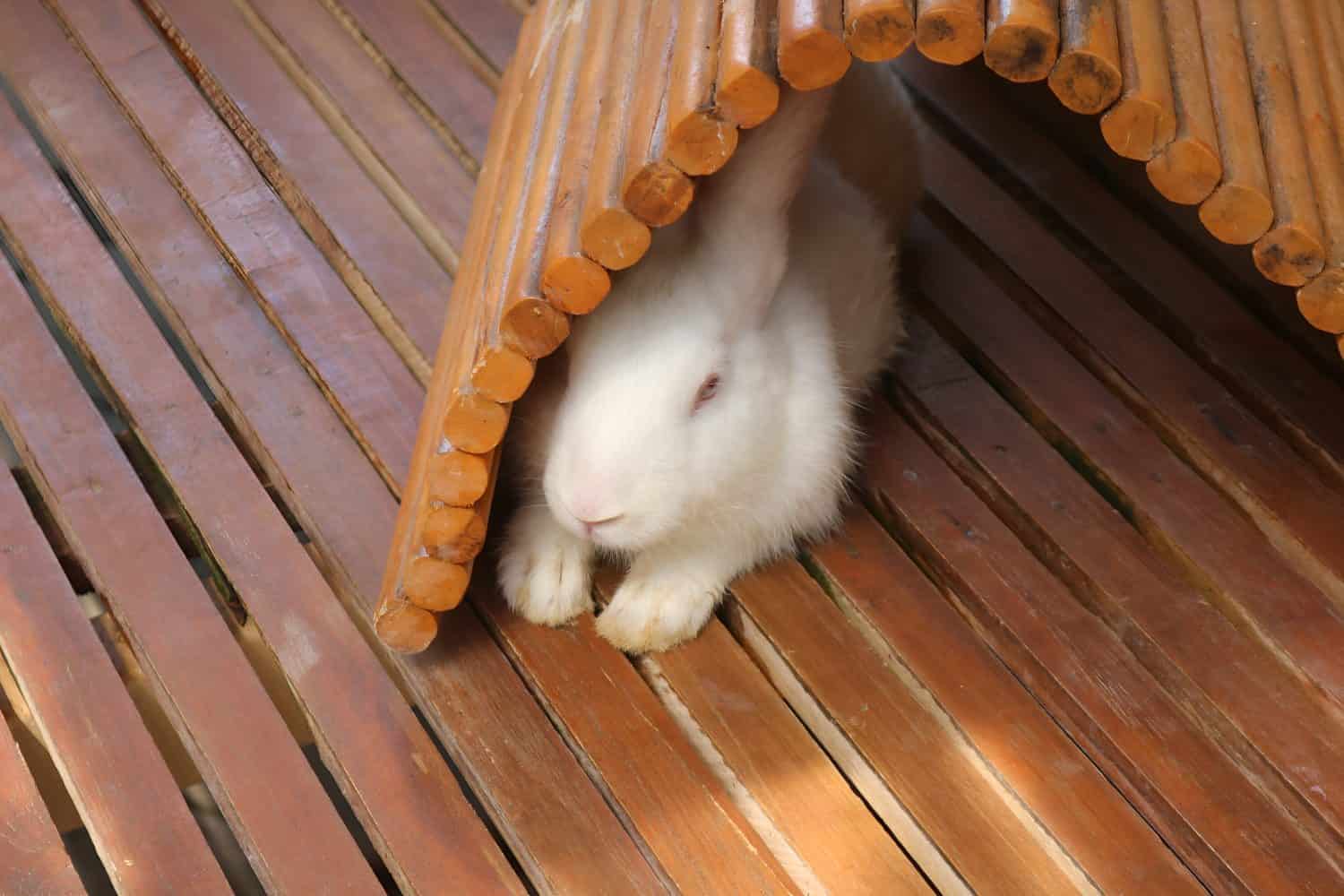
Give your rabbit plenty of tunnels, hides, and toys.
©laneophyte/Shutterstock.com
If your rabbits don’t seem to explore their free-roam space, make sure they have enough enrichment items spread out around the room. They should also have plenty of places to hide, as they might not feel safe going too far out into the open to explore.
Tunnels can encourage your bunnies to run around the room, toys give them something to interact with, and houses provide a sense of safety.
You don’t need rabbit stuff everywhere on your floor, but dispersing it around your home is a good idea. After all, the buns are part of the family!
#5: Use Rugs to Encourage Exploration

Many rabbits won’t walk on hard flooring.
©Choco’Love/Shutterstock.com
Another tip to encourage your bunnies to explore is to use rugs or washable mats. Many rabbits don’t like to walk on hard flooring, and some will refuse altogether.
Carpet is softer on their feet and allows them to get a grip when hopping or running. Most buns will slip on tile or hardwood floors which can be scary for them.
#8: Don’t Allow Interactions with Cats or Dogs

Rabbits should not be around predator animals such as dogs, cats, or ferrets.
©iStock.com/adogslifephoto
We all see cute videos online of unlikely animal companions, but unfortunately, these pairings are often unsafe for the animals involved.
This is definitely true when it comes to allowing cats and dogs around your rabbits. Ideally, they should be kept separate at all times. At a minimum, they should never be left together unattended.
It only takes a second for a cat or dog to hurt your rabbit. They can even injure them trying to play!
The truth is that all cats and dogs have prey drives that training can’t remove. Some live with rabbits peacefully–but even with animals who have low prey drives, there is always a risk, and it’s not worth taking!
#9: Make Sure They Have a Companion
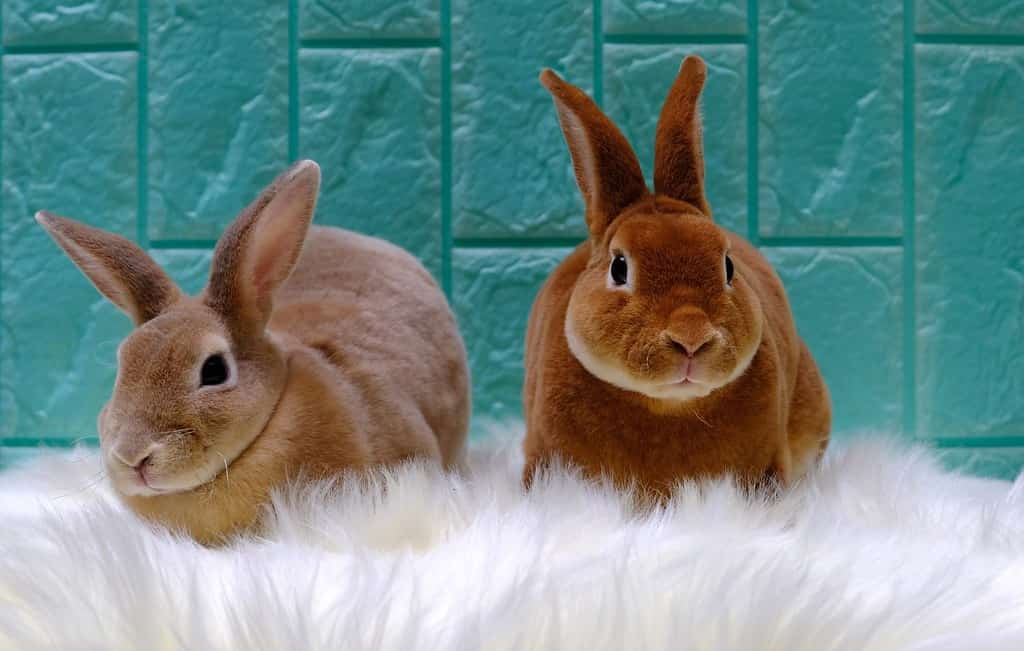
Rabbits belong in pairs or groups, and you should never keep them alone.
©ansoz/Shutterstock.com
Lastly, please make sure your rabbit has at least one rabbit friend! They’ll be more confident in exploring their free-roam space and will likely be more active as well.
Humans cannot meet rabbits’ social needs because we aren’t bunnies! We love them, and they love us, of course. But expecting that you’ll be enough for your rabbit is like expecting a human to only interact with bunnies, never humans, for their whole life.
Rabbits are social animals who naturally live in large colonies. They get sad when left alone, which will inevitably happen when living with humans who need to work, run errands, and socialize outside of the house. Living alone causes stress and often depression in rabbits.
#10: Learn how to Bond with Your Rabbits
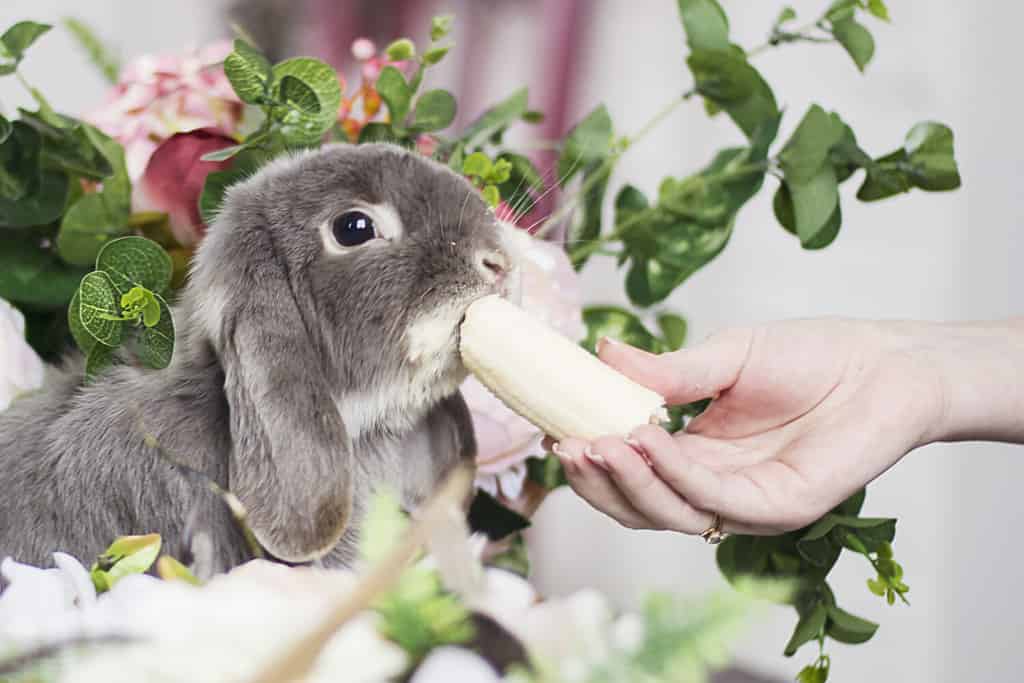
Hand-feeding your rabbits helps them feel comfortable with you, as they’ll associate you with positive memories.
©Katarinks/Shutterstock.com
Of course, it’s also important for you to have a good relationship with your rabbits! This is much easier when allowed to free-roam, but some people still find it difficult.
Bunnies aren’t like dogs and cats. They’re prey animals who are naturally very skittish.
Grab some veggies or even your rabbits’ favorite fruit (many love bananas!) and get down on your rabbits’ level. You can either sit or lie on the floor.
Let them come to you, encouraging them by leaving small bits of food nearby. Slowly move it closer until you can set it on your leg, then feed it by hand.
Doing this for a little while each day will help your rabbits adjust to you and your presence. Keep in mind that this might be a slow process and that new bunnies will take time to adjust to your home and family.
The more time you spend together, even if you just sit on the couch while they hop around, the more they’ll get used to you!
Later on, you can develop an even closer bond by teaching your rabbit tricks, staying nearby while they eat their daily veggies, petting them, and even calling them into your lap if they enjoy cuddles!
Conclusion
Overall, free-roaming is great for your rabbits and your bond with them. It’s a completely different experience to keeping a caged rabbit that has little space to hop around or interact with your family.
Remember to thoroughly bunny-proof your space before bringing your rabbits home, provide plenty of enrichment items in their space, and always keep bunnies in pairs or groups.
The photo featured at the top of this post is © Mariska van Dasselaar/Shutterstock.com
Thank you for reading! Have some feedback for us? Contact the AZ Animals editorial team.





